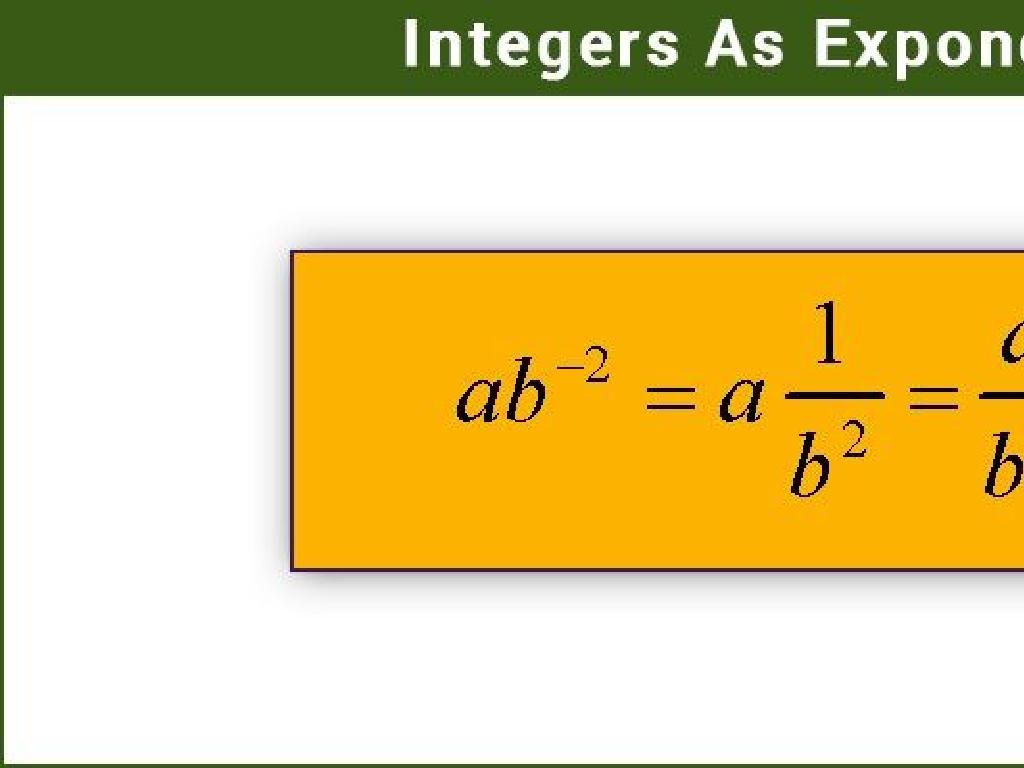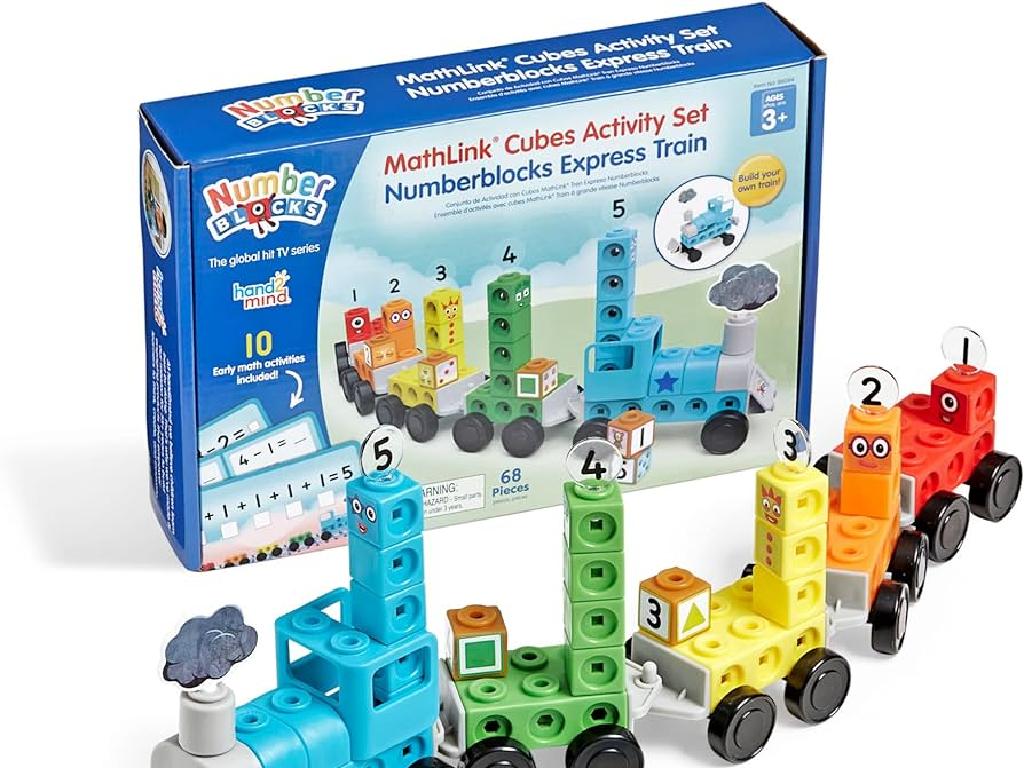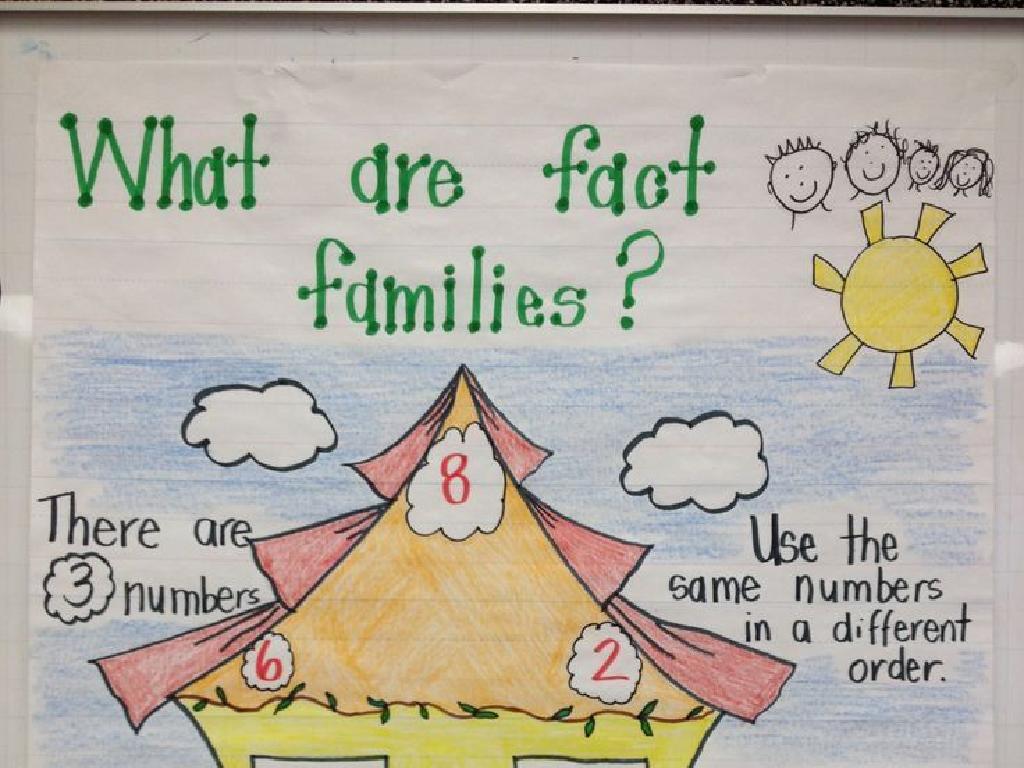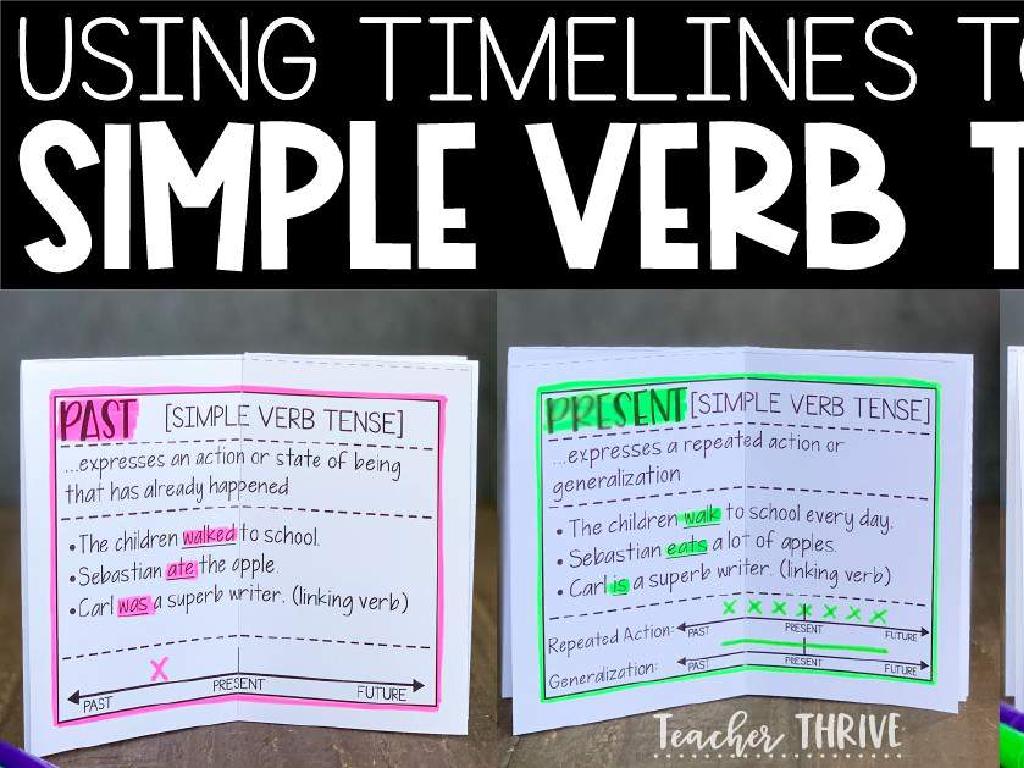Convert And Compare Customary Units
Subject: Math
Grade: Sixth grade
Topic: Units Of Measurement
Please LOG IN to download the presentation. Access is available to registered users only.
View More Content
Introduction to Customary Units
– Explore customary measurement units
– Importance of measuring in daily life
– Measuring helps in construction, cooking, and more
– Learn inches, feet, yards, and miles
– Smaller to larger: 12 inches in a foot, 3 feet in a yard
– Comparing different units
– How many feet in a mile? Convert between units
|
This slide introduces students to the concept of customary units of measurement, which are primarily used in the United States. Start by discussing the various scenarios in daily life where measurement is essential, such as in cooking, construction, or determining travel distances. Introduce the most common units of length – inches, feet, yards, and miles, and explain their relationships. Emphasize the importance of being able to convert between these units for accurate measurement and comparison. Provide examples and practice problems to help students become comfortable with these concepts. Encourage students to think of situations where they have used or could use these measurements.
Length Conversion: Inches to Feet
– 1 foot equals 12 inches
– Convert 24 inches to feet
– Divide the number of inches by 12 to find feet
– Visual comparison of lengths
– Use a ruler to show 12 inches is 1 foot
– Practice with different measurements
– Try converting 36, 48, and 60 inches to feet
|
This slide introduces students to the concept of converting inches to feet, a fundamental skill in customary unit conversion. Start by explaining that one foot is equal to 12 inches. Then, guide students through the process of converting 24 inches into feet by dividing by 12. Provide a visual example using a ruler to reinforce the concept that 12 inches make up 1 foot. Encourage students to practice with different measurements to solidify their understanding. This activity will help students visualize the conversion process and compare lengths in both inches and feet.
Length Conversion: Feet to Yards
– Understand feet to yards conversion
– 1 yard equals 3 feet. How can we convert feet into yards?
– Convert 6 feet into yards
– Practice: If 1 yard is 3 feet, how many yards are in 6 feet?
– Football field as a yard example
– Visualize: A football field is marked in yards. How does this relate to feet?
|
This slide is aimed at helping students grasp the concept of converting feet to yards, a fundamental skill in customary unit measurement. Start by explaining that one yard is equivalent to three feet. Then, present a practical problem where students convert 6 feet into yards to solidify their understanding. Use a football field as a relatable visual example since it is measured in yards, which can help students better visualize the concept of yards. Encourage students to think of other familiar objects or distances measured in yards to further their understanding. The slide is designed to be interactive and to prompt students to apply their knowledge practically.
Length Conversion: Yards to Miles
– Understanding yards and miles
– A yard is a shorter length unit, while a mile measures longer distances.
– Conversion: Yards to miles
– 1 mile equals 1760 yards. How can we convert yards to miles?
– Practice: 5280 yards to miles
– Let’s convert 5280 yards into miles using the formula: miles = yards ÷ 1760.
– Miles in long-distance travel
– Miles are often used to measure the distance between cities or travel routes.
|
This slide introduces students to the concept of converting between different units of length within the customary system, specifically from yards to miles. Start by explaining that a yard is a unit used for shorter distances, while a mile is used for longer distances, such as between cities. To convert yards to miles, divide the number of yards by 1760. Use the example of 5280 yards to demonstrate this conversion, which should result in 3 miles. Emphasize the practical application of this knowledge by relating miles to long-distance travel, which can help students visualize and understand the scale of a mile. Encourage students to practice with additional examples and to think of situations where they would need to convert between these two units.
Customary Units: Weight and Volume
– Common weight units: oz, lb, ton
– Ounces (oz), pounds (lb), and tons are used to measure weight
– Volume units: tsp, tbsp, cup, pt, qt, gal
– Teaspoons (tsp), tablespoons (tbsp), cups, pints (pt), quarts (qt), and gallons (gal) measure volume
– Real-world examples for context
– How many ounces in a pound? Convert 3 pounds to ounces
– Practice converting units
– Convert 2 cups to pints and 4 quarts to gallons
|
This slide introduces students to the customary units of weight and volume used in the United States. Start by explaining each unit of weight and volume, ensuring to highlight the most commonly used units for everyday measurements. Provide real-world examples to help students understand the practical applications of these units, such as cooking recipes or weighing produce. Engage the class with conversion practice, using simple multiplication or division, to solidify their understanding of how different units relate to each other. Encourage students to ask questions and work through the conversion examples provided in the sub_content.
Comparing Customary Units
– Comparing 1 foot to 1 yard
– 1 yard is larger as it equals 3 feet
– Understanding unit comparison
– Learn to compare units like inches, feet, and yards
– Using conversion factors
– Convert units using multiplication or division
– Practice with real examples
– Convert and compare: 12 inches vs 1 foot, 3 feet vs 1 yard
|
This slide introduces students to the concept of comparing different customary units of measurement. Start by asking which is larger, 1 foot or 1 yard, to engage students in thinking about unit sizes. Explain that 1 yard is equal to 3 feet, which makes it larger. Teach students how to compare different units by understanding their relative sizes and using conversion factors to convert one unit to another. Provide practice examples, such as converting 12 inches to 1 foot or 3 feet to 1 yard, to solidify their understanding. Encourage students to use these skills to compare units in real-life scenarios.
Conversion Tricks: Customary Units
– Remembering unit conversions
– Use mnemonic devices to memorize units
– Visualize with ‘A gallon of milk’
– A gallon contains 4 quarts, 8 pints, or 128 ounces
– Conversion shortcuts
– Quick tips: 1 cup is 8 ounces, 3 feet equals 1 yard
– Practice conversion problems
– Solve exercises converting gallons to quarts, pints, and cups
|
This slide is aimed at helping students find easier ways to remember customary unit conversions through visualization and mnemonic devices. For example, they can visualize a gallon of milk to understand volume units, such as how many quarts, pints, or ounces are in a gallon. Provide students with shortcuts like ‘a pint’s a pound the world around’ to remember that a pint of water approximately weighs a pound. Encourage them to practice with these shortcuts by solving problems that involve converting between gallons, quarts, pints, and cups. This will help reinforce their understanding and ability to compare different customary units.
Real-life Applications of Unit Conversion
– Importance of unit conversion
– Accurate conversions are crucial for recipes, construction, and more.
– Measurement in daily life
– Consider cooking, shopping, or building something.
– Share your measurement stories
– Interactive Q&A session
– Let’s discuss how we use measurement in our lives.
|
Understanding how to convert and compare customary units is vital in many aspects of daily life. From following a recipe in the kitchen to determining the right amount of paint for a room, accurate measurement ensures success. During the presentation, engage students by discussing real-life scenarios where measurement is essential, such as cooking, shopping, or home projects. Encourage students to share their own experiences with measurement in an interactive Q&A session. This will help them relate the mathematical concepts to their personal lives and understand the practical importance of the subject.
Class Activity: Measurement Scavenger Hunt
– Find and measure classroom objects
– Convert measurements between units
– Use rulers or tape measures for length, cups for volume
– Share and discuss findings with class
– Understand practical unit application
– See how everyday items can be measured in inches, feet, yards, etc.
|
This interactive activity is designed to help students apply their knowledge of converting and comparing customary units in a fun and engaging way. Provide students with rulers, tape measures, and other measuring tools. They should find objects around the classroom, measure their dimensions, and then convert those measurements into different units (e.g., inches to feet, ounces to pounds). After measuring, students will share their findings with the class and discuss the differences they noticed when converting units. This will help them understand the practical application of measurement in everyday life. Possible objects to measure include desks, books, the classroom door, or a water bottle. Encourage creativity and ensure that each student has a chance to participate in the discussion.
Conclusion & Homework: Mastering Customary Units
– Recap unit conversions
– Importance of accurate measurement
– Accurate conversions are crucial in daily life, science, and construction.
– Homework: Conversion worksheet
– Solve provided problems to reinforce today’s lesson.
– Practice makes perfect
|
As we wrap up today’s lesson, it’s important to review the key concepts of converting between different customary units such as inches to feet, feet to yards, and so on. Emphasize the real-world applications of these skills in fields like cooking, construction, and science, where accurate measurement and conversion are essential. For homework, students will complete a worksheet with a variety of conversion problems. This will help them practice and solidify their understanding of the concepts. Encourage them to try solving the problems without a calculator to strengthen their mental math skills. In the next class, we can review any challenging problems together.






